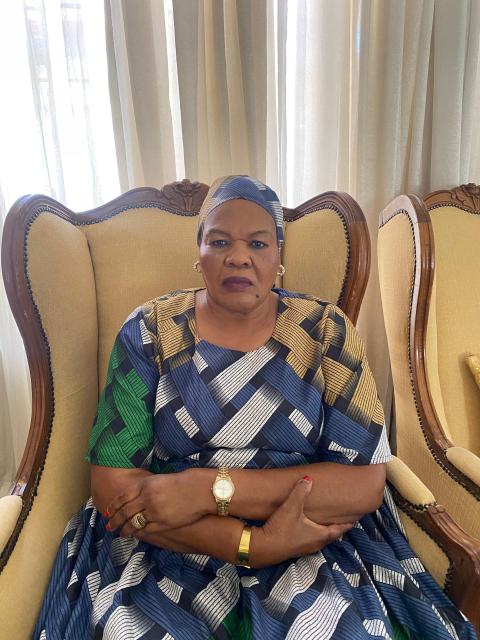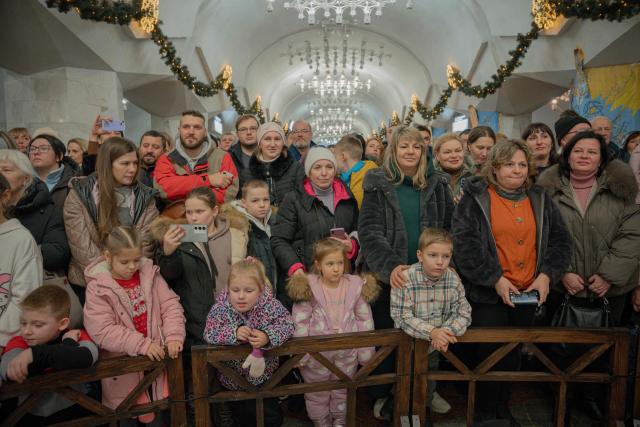
Salome Kambala, acting national spokesperson of the National Organisation of Parents in Education (NAOPE). (Photo: Contributed)

Okatana Constituency councillor Petrus Shigwedha Ashipala. (Photo: Contributed)

ONTINDA - A Top Teenagers FC player in action. (Photo: Contributed)

GROOTFONTEIN, 19 December 2025 - The accident scene where two trucks and a passenger bus were involved in a collision Friday afternoon outside Grootfontein in the Otjozondjupa Region. (Photo: Contributed)

The Communications Regulatory Authority of Namibia (CRAN) Board of Directors chairperson, Tulimevava Mufeti. (Photo: Contributed)

KATIMA MULILO, 18 December 2025 - Zambezi Region Governor, Dorothy Kabula is urging residents to guard against gender-based violence and human trafficking this festive season. (Photo: Contributed)

MAPOREZA, 19 December 2025 - The Kavango West Regional Directorate of Education, Innovation, Youth, Sports, Arts and Culture officially handing over construction sites to the Namibia Training Authority (NTA) at Maporeza village in the Kavango West Region on Friday. (Photo by: Lylie Joel) NAMPA

MAPOREZA, 19 December 2025 - The Kavango West Regional Directorate of Education, Innovation, Youth, Sports, Arts and Culture officially handing over construction sites to the Namibia Training Authority (NTA) at Maporeza village in the Kavango West Region on Friday. (Photo by: Lylie Joel) NAMPA

A woman with a child walks in between trams decorated with garlands on Christmas Day in Kharkiv on December 25, 2025, amid the Russian invasion of Ukraine. (Photo by Ivan SAMOILOV / AFP)

A driver operates a tram decorated with garlands on Christmas Day in Kharkiv on December 25, 2025, amid the Russian invasion of Ukraine. (Photo by Ivan SAMOILOV / AFP)

A member of the public poses for a photo in between trams decorated with garlands on Christmas Day in Kharkiv on December 25, 2025, amid the Russian invasion of Ukraine. (Photo by Ivan SAMOILOV / AFP)

A girl poses making a heart-shaped gestures on a tram decorated with garlands on Christmas Day in Kharkiv on December 25, 2025, amid the Russian invasion of Ukraine. (Photo by Ivan SAMOILOV / AFP)

A couple hugs near trams decorated with garlands on Christmas Day in Kharkiv on December 25, 2025, amid the Russian invasion of Ukraine. (Photo by Ivan SAMOILOV / AFP)

(FILES) Demonstrators hold a banner demanding for the release of all political prisoners during a protest called by the opposition on the eve of the presidential inauguration, in Caracas on January 9, 2025. At least 60 post-election detainees were released from prison on December 25, 2025, a non-governmental organisation made up of human rights activists and relatives of political prisoners reported. Those released had been arrested amid the political crisis triggered by President Nicolas Maduro's re-election in July 2024 for a third term amid allegations of fraud from the opposition. (Photo by JUAN BARRETO / AFP)

Visitors watch the folk Christmas concert "Kolyada Unites" on Christmas Day in the subway in Kharkiv on December 25, 2025, amid the Russian invasion of Ukraine. (Photo by Ivan SAMOILOV / AFP)

Students from art schools perform during the folk Christmas concert "Kolyada Unites" on Christmas Day in the subway in Kharkiv on December 25, 2025, amid the Russian invasion of Ukraine. (Photo by Ivan SAMOILOV / AFP)